In the diverse world of investing, managed futures have steadily carved out their niche as a dynamic and attractive asset class. For the uninitiated, the term “managed futures” might sound like complex jargon best left to Wall Street professionals. But delve a bit deeper, and you’ll find a realm of investment opportunities that could potentially add significant value to your portfolio.
Managed futures refer to investment strategies primarily involving futures contracts. These are legal agreements to buy or sell a particular commodity or financial instrument at a predetermined price at a specified time in the future. A defining characteristic of managed futures is their inherent diversity. They encompass a broad range of global markets, including commodities, currencies, bond and stock indices, and even interest rates.
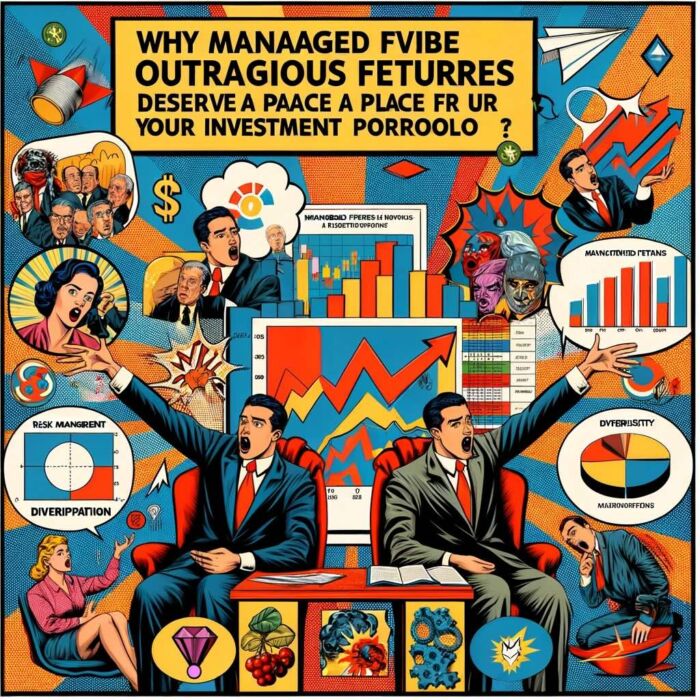
But why should an average investor care about managed futures? The simple answer is the potential for enhanced portfolio performance and risk mitigation. By including managed futures in your investment portfolio, you could potentially reap the benefits of strong returns, improved diversification, and the ability to profit from both rising and falling markets.
In this article, we will journey through the realm of managed futures. We’ll start by gaining a solid understanding of what managed futures are and how they work. We’ll then move onto the tangible benefits they can offer and the role they could play within your broader investment portfolio. Of course, it’s important to consider the risks associated with managed futures. We’ll explore those too. And finally, we’ll offer insights into how to choose the right managed futures fund. So, whether you’re a seasoned investor or a beginner looking to broaden your investing horizons, buckle up and let’s embark on this exploration of managed futures.

Understanding Managed Futures
Definition and Basic Concept of Managed Futures
Managed futures represent an intriguing chapter in the big book of investing. At its core, the term refers to a type of investment strategy that involves futures contracts. These contracts obligate the buyer to purchase, and the seller to sell, a particular asset at a predetermined price at a specific time in the future. The asset in question can be a commodity, such as gold or oil, a financial instrument, like a bond or a stock index, or even an interest rate.
What sets managed futures apart is the “managed” part of the name. This indicates that professional money managers, known as Commodity Trading Advisors (CTAs), are at the helm. CTAs apply their expertise to guide the investment strategy, making decisions about what, when, and how much to buy or sell based on their analysis of market trends and conditions.
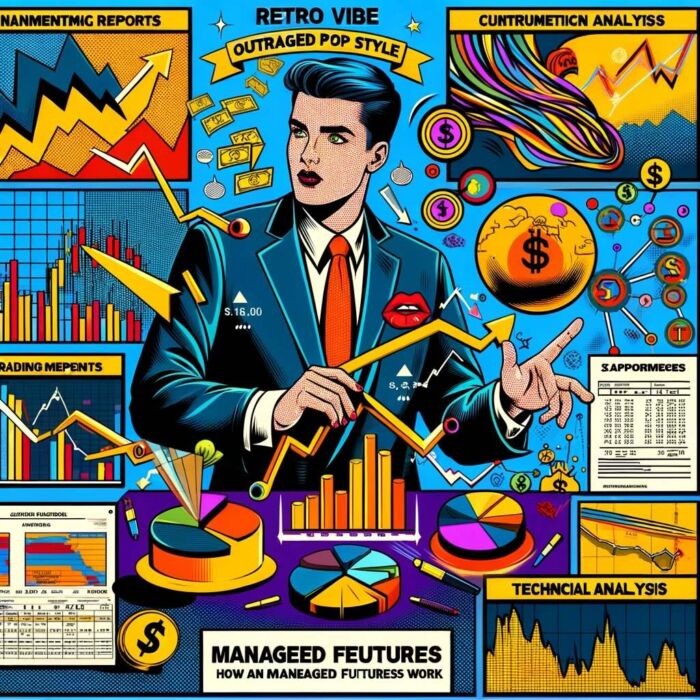
How Managed Futures Work
Now, let’s break down how this operates in practice. Imagine you’re an investor in a managed futures fund. Your chosen CTA will take the reins, leveraging their market knowledge and research to make strategic decisions on your behalf.
CTAs typically use a mix of fundamental and technical analysis to predict future price movements. Fundamental analysis involves examining economic factors such as supply and demand dynamics, while technical analysis focuses on patterns in price movements and trading volumes. The CTA will then execute trades accordingly, aiming to buy low and sell high, or vice versa, to generate profits for the fund.
Types of Commodities Typically Involved in Managed Futures
Now let’s talk about the playing field. The beauty of managed futures lies in its vast and diverse landscape. From traditional commodities like oil, gold, and agricultural products to financial instruments such as stock indices, bonds, and currencies, the array is broad. This array even extends to more unconventional sectors, like climate derivatives, where futures contracts are linked to weather variables.
The potential for such wide-ranging exposure is a part of the allure of managed futures. It offers the prospect of profiting from trends across a multitude of markets, rather than being tied to the fortunes of a single asset class. As we’ll see in the next section, this diversification is a key advantage that managed futures can bring to your portfolio. So hang tight, as we dive into the intriguing benefits of this distinctive asset class.
source: Simplify Asset Management on YouTube
The Benefits of Managed Futures
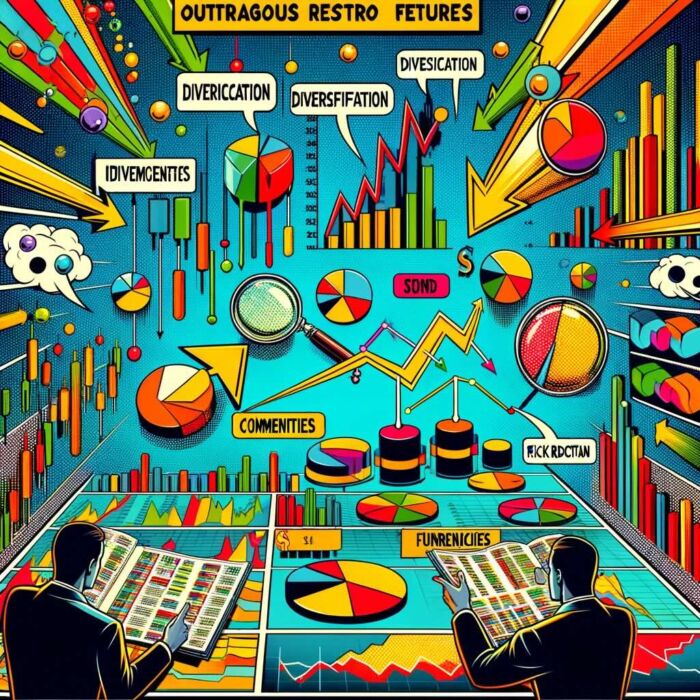
Diversification and Risk Reduction
One of the key benefits of managed futures is diversification. As the age-old adage goes, “Don’t put all your eggs in one basket.” In the realm of investing, this means spreading your investments across a variety of assets to reduce risk.
Managed futures can invest in a broad array of markets, including commodities, currencies, and financial instruments. This wide-ranging exposure can help smooth out the bumps when one market or asset class is experiencing volatility. When stocks are down, for instance, your managed futures investments in commodities or currencies might be faring better, helping to balance your overall portfolio performance.
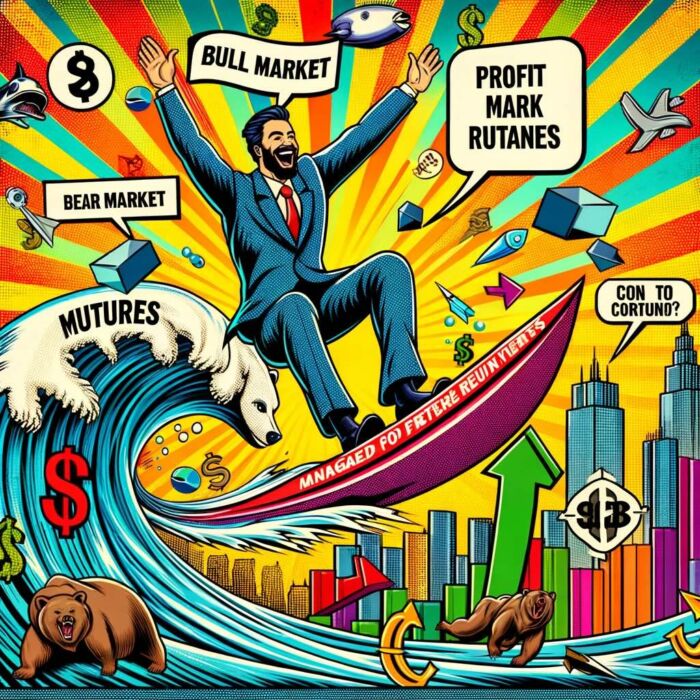
Potential for High Returns
Managed futures aren’t just about playing defense, though. They also have a reputation for delivering robust returns. While the level of returns can fluctuate depending on market conditions and the skill of the CTA, managed futures have the potential to outperform traditional asset classes. They allow investors to tap into markets and strategies that might otherwise be inaccessible, opening the door to unique profit-making opportunities.
The Ability to Profit in Various Market Conditions
Perhaps one of the most compelling benefits of managed futures is their ability to make money in both rising and falling markets. This is because futures contracts allow for ‘going long’ (buying with the expectation that prices will rise) or ‘going short’ (selling with the expectation that prices will fall). This flexibility means that managed futures can potentially profit no matter which way the market winds are blowing.
In the midst of a bull market, managed futures can ride the upward wave, and during a bear market, they can seek profits from declining prices. This feature makes them particularly valuable during market downturns, providing a counterbalance when other investments might be struggling.
So, there you have it – the impressive trio of diversification, potentially high returns, and the ability to profit in diverse market conditions. These compelling benefits make a solid case for including managed futures in your investment mix. But as with all investments, they come with their own set of risks, which we’ll delve into next.
The Role of Managed Futures in a Portfolio
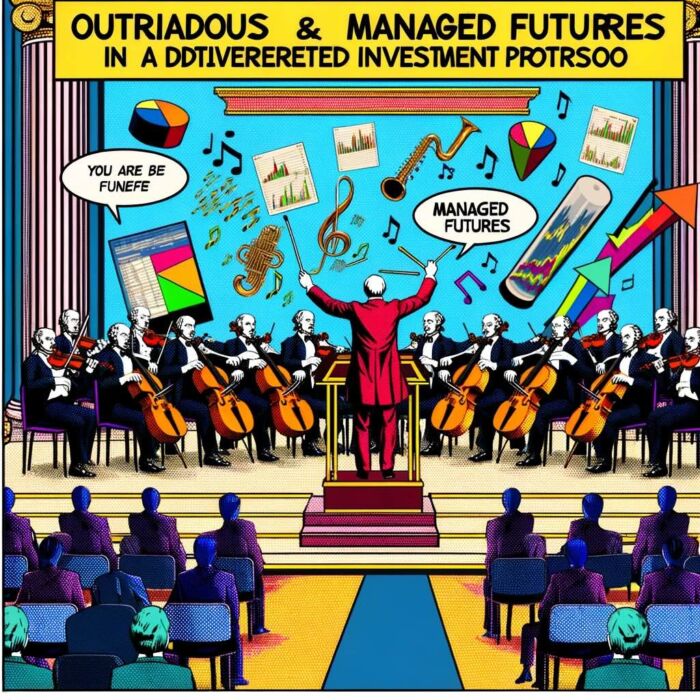
How Managed Futures Fit Within the Broader Portfolio
Imagine your investment portfolio as a well-orchestrated symphony. Each instrument, or in this case, asset class, plays a distinct role, contributing to the overall harmony. In this symphony, managed futures can be thought of as the versatile musician who can play multiple instruments, stepping in to fill the gaps and enhance the overall performance.
Managed futures are typically used as a complement to traditional investments like stocks and bonds. While these traditional investments are key players in the portfolio, managed futures can add a unique melody. By investing in a variety of markets with different dynamics, managed futures can provide a counterpoint, helping to stabilize your portfolio when other assets are experiencing downturns.

The Correlation (or Lack Thereof) Between Managed Futures and Other Assets
In investing, correlation refers to the degree to which the prices of two assets move in relation to each other. A significant advantage of managed futures is that they often have a low or even negative correlation to traditional asset classes. This means that they can perform well when stocks or bonds are performing poorly, and vice versa.
This low correlation can be a major boon for investors seeking to spread their risk and potentially enhance returns. It allows managed futures to act as a shock absorber, smoothing out the overall volatility of the portfolio and helping to provide more consistent performance.
Case Studies or Examples of Successful Portfolio Integration
Let’s consider an example to illustrate these benefits. Imagine an investor who had a portfolio comprised solely of stocks during the 2008 financial crisis. That investor would have faced significant losses as the stock market plummeted. But if the same investor had allocated a portion of their portfolio to managed futures, the impact could have been considerably lessened.
This is because many managed futures strategies performed well during the crisis, capitalizing on trends such as falling stock prices or changing commodity prices. By providing positive returns during a period when stocks were performing poorly, managed futures could have helped to offset losses and stabilize the overall portfolio performance.
In sum, the integration of managed futures into a portfolio can be likened to adding a secret sauce. A well-judged addition can enhance the flavor of your investments, providing a balance of risk and return that may be palatable even in the most complex market conditions. But before you decide to spice up your portfolio with managed futures, it’s important to understand the potential risks, which we’ll delve into next.
source: CME Group on YouTube
Risks Associated with Managed Futures
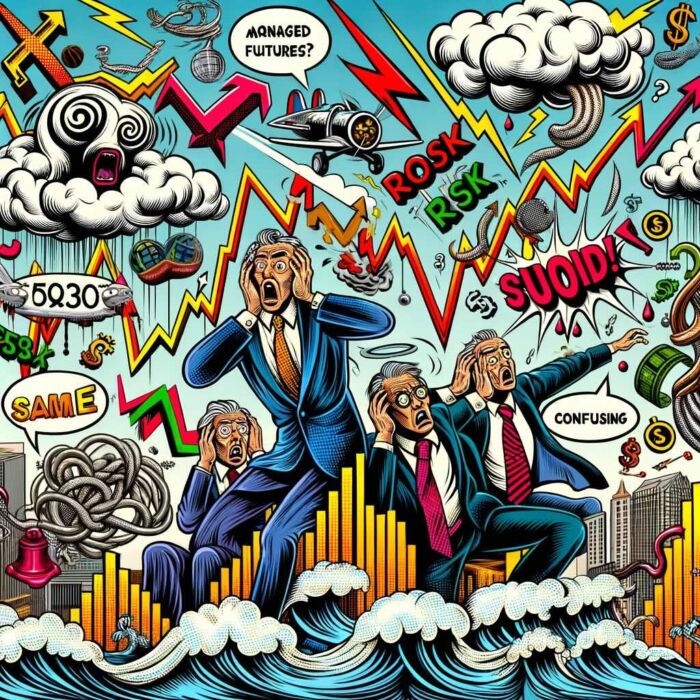
Market Risk and Volatility
Investing in managed futures is not without its share of risks, and market risk sits right at the top of that list. Market risk refers to the possibility of an investor experiencing losses due to factors that affect the overall performance of the financial markets. Given that managed futures invest in a variety of markets, they are exposed to the fluctuations and volatility of these markets.
For example, unexpected changes in interest rates, economic indicators, or political events can significantly affect the price of futures contracts. A sudden drop in oil prices could negatively impact a managed futures fund heavily invested in oil futures, just as an unexpected political event could disrupt currency markets.
Complexity and Understanding of the Asset Class
Managed futures can be complex. They involve strategies and financial instruments that might not be familiar to the average investor. Futures contracts, options, leverage – these can be difficult to navigate for the uninitiated. Furthermore, the performance of managed futures can be hard to predict due to the broad array of markets they can invest in and the diverse strategies employed by different CTAs.
This complexity underscores the importance of understanding what you’re investing in. It’s crucial to conduct thorough research or seek advice from a trusted financial advisor before diving into managed futures.
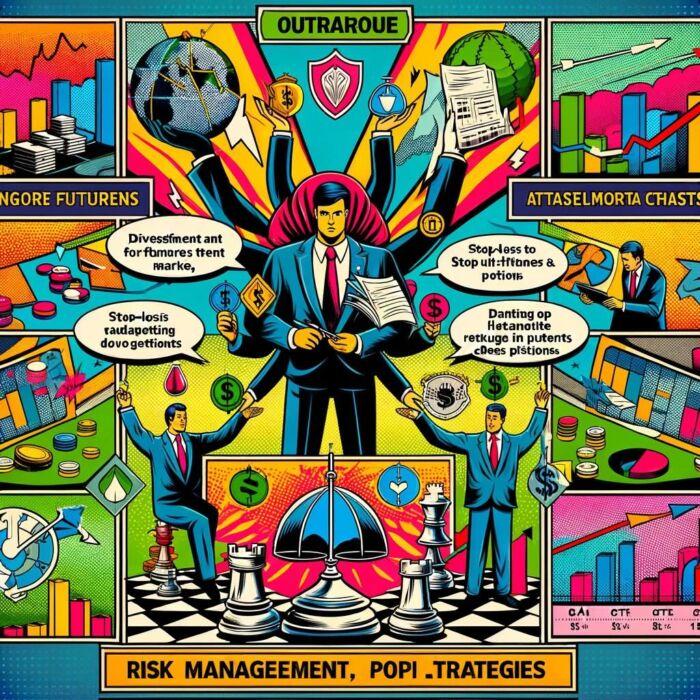
Risk Management Strategies
Despite the risks, it’s important to remember that there are effective strategies to manage and mitigate these risks. For instance, diversification within managed futures can help spread the risk. Investing in a managed futures fund that trades in a variety of markets can potentially offset losses in one market with gains in another.
Another strategy is the use of stop-loss orders, which can limit losses by automatically selling a futures contract when it reaches a predetermined price. CTAs also typically have risk management protocols in place, such as monitoring market volatility and adjusting positions accordingly.
While managed futures do carry certain risks, they can be a valuable addition to your portfolio when approached with understanding and prudence. Like an exotic dish, managed futures might seem intimidating at first, but with a bit of research and the right guidance, they can provide an exciting and rewarding addition to your investment feast. As always, understand your risk tolerance and investment goals before venturing into new investment territories. With that caution in mind, let’s move onto choosing the right managed futures fund.
source: ETFguide on YouTube
Choosing the Right Managed Futures Fund
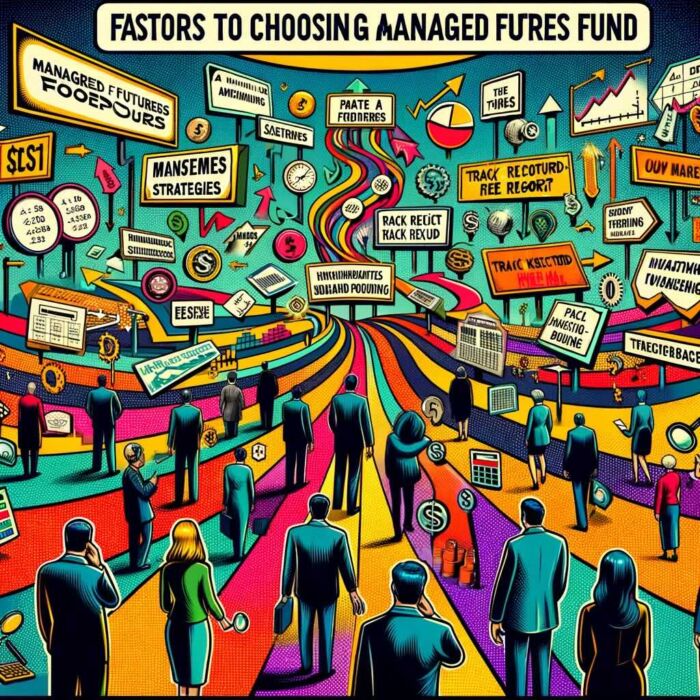
Factors to Consider When Choosing a Managed Futures Fund
Picking the right managed futures fund can feel like navigating a maze. With a plethora of options available, how do you choose the one that’s right for you? Here are some key factors to consider:
- Investment Strategy: Different funds employ different strategies. Some might focus on trend-following, riding the waves of market trends to seek profits. Others might take a more contrarian approach, betting against prevailing market trends. Understanding a fund’s strategy will give you insight into how it makes money and what market conditions it might thrive or struggle in.
- Track Record: While past performance is not indicative of future results, a fund’s track record can provide some insight into its reliability and the skill of its managers. Look at how the fund has performed in different market conditions – both good and bad.
- Fees: Managed futures funds often charge management fees and performance fees. These fees can significantly impact your net returns, so make sure you understand them fully.

Role of Commodity Trading Advisors (CTAs)
When choosing a managed futures fund, a key consideration should be the quality and reputation of the Commodity Trading Advisors (CTAs) managing the fund. These are the maestros conducting your investment symphony. They’re responsible for making the day-to-day investment decisions, so their skill, experience, and investment approach can significantly influence the fund’s performance.
When evaluating a CTA, consider their track record, their investment philosophy, and their risk management strategies. A good CTA should also be transparent, providing regular updates and clear explanations about the fund’s performance and strategy.
Importance of Due Diligence and Research
Finally, no matter how enticing a managed futures fund might seem, never neglect the importance of due diligence and research. Scrutinize the fund’s documents, understand its strategy, evaluate its risks, and assess the credibility of its managers.
If you’re new to managed futures or unsure about any aspect, consider consulting with a financial advisor. They can provide valuable guidance and help you determine if a particular fund aligns with your investment goals and risk tolerance.
Remember, investing in managed futures isn’t about hopping onto the latest trend or choosing a fund at random. It’s about careful selection, with each choice contributing to the harmony of your overall portfolio. With the right research, advice, and selection, managed futures can play a beautiful tune in your investment symphony. So, arm yourself with knowledge and let the music play!
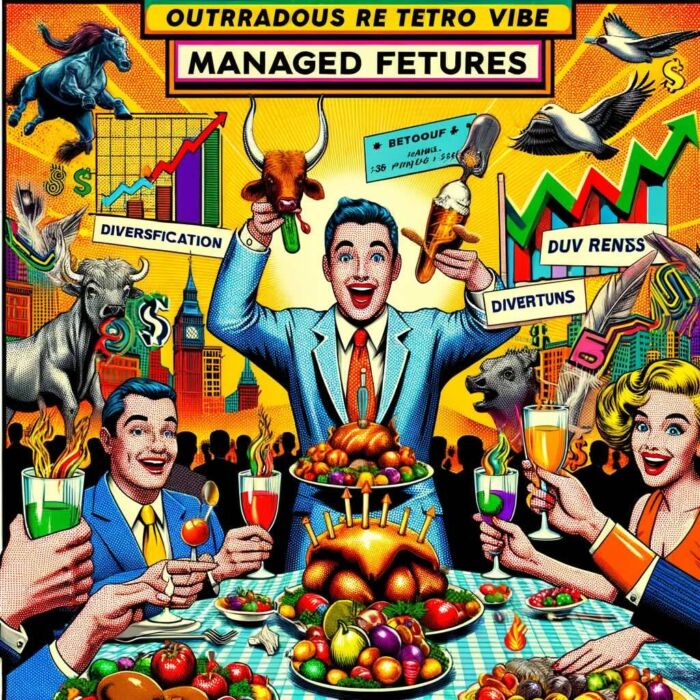
Conclusion: Importance and Benefits of Managed Futures
As we bring our journey through the world of managed futures to a close, let’s take a moment to reflect on the landscape we’ve traversed. Managed futures, with their potential for high returns and low correlation to traditional asset classes, can play a unique and important role in your investment portfolio. They can provide the spice and flavor, transforming an ordinary investment dish into a gourmet feast.
From providing a hedge against market downturns to offering opportunities for significant gains in both bull and bear markets, the benefits of managed futures are compelling. But remember, like any sophisticated dish, they come with their own set of complexities and potential risks.
Importance of Due Diligence
If there’s one thing to take away from our exploration, it’s the importance of due diligence. Managed futures, with their myriad of strategies and markets, can be complex. But fear not, because with thorough research, a deep understanding of the asset class, and perhaps the guidance of a trusted financial advisor, you can navigate this terrain.
Reviewing a fund’s strategy, examining its track record, understanding its fee structure, and scrutinizing the skills of its Commodity Trading Advisors (CTAs) – these are all critical steps in your due diligence process. Remember, investing should never be a leap in the dark, but rather a thoughtful step illuminated by knowledge and understanding.
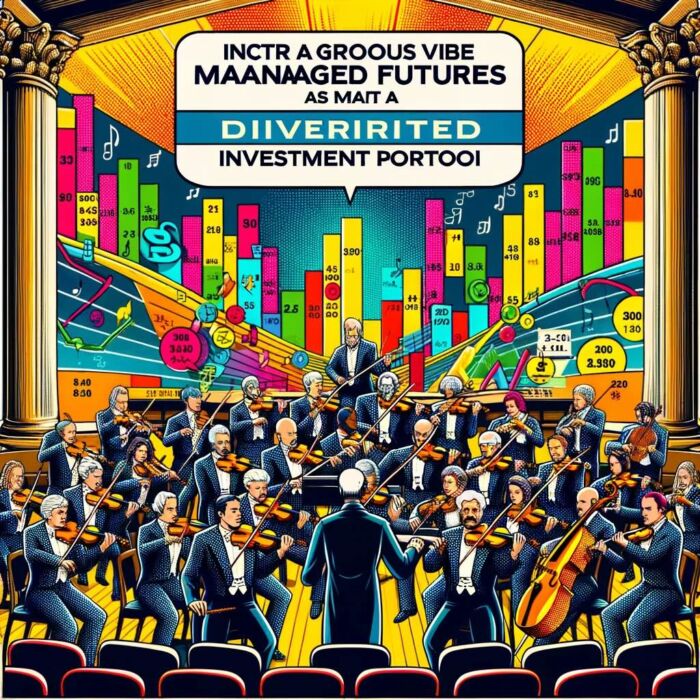
Consider Managed Futures as Part of a Diversified Portfolio
In the grand symphony of investing, diversification is the harmony that ties the melody together. Each instrument or asset class plays its part, contributing to the overall performance. And in this ensemble, managed futures can be the unique instrument, bringing a distinctive tone that enhances the overall harmony.
So, to all the intrepid investors out there, consider managed futures. Explore this unique asset class. Dive into the research. Talk to the experts. And when you’re ready, consider adding this fascinating instrument to your investment symphony. With the right composition, your symphony can create a beautiful melody, resilient in the face of market volatility, and poised for potential growth.
So, take up the baton, dear investor, and let the symphony play!
Important Information
Investment Disclaimer: The content provided here is for informational purposes only and does not constitute financial, investment, tax or professional advice. Investments carry risks and are not guaranteed; errors in data may occur. Past performance, including backtest results, does not guarantee future outcomes. Please note that indexes are benchmarks and not directly investable. All examples are purely hypothetical. Do your own due diligence. You should conduct your own research and consult a professional advisor before making investment decisions.
“Picture Perfect Portfolios” does not endorse or guarantee the accuracy of the information in this post and is not responsible for any financial losses or damages incurred from relying on this information. Investing involves the risk of loss and is not suitable for all investors. When it comes to capital efficiency, using leverage (or leveraged products) in investing amplifies both potential gains and losses, making it possible to lose more than your initial investment. It involves higher risk and costs, including possible margin calls and interest expenses, which can adversely affect your financial condition. The views and opinions expressed in this post are solely those of the author and do not necessarily reflect the official policy or position of anyone else. You can read my complete disclaimer here.




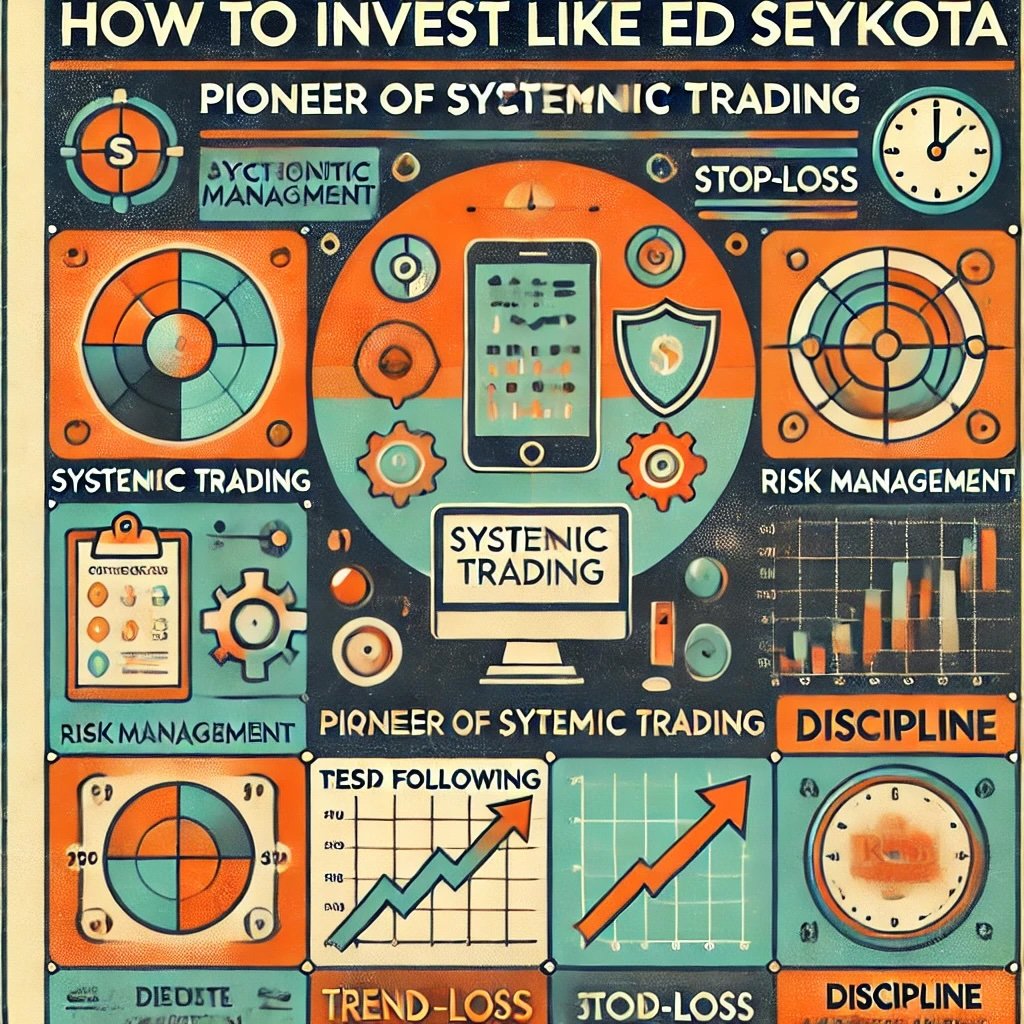

You missed one $ASMF. It can be backtested using $ASFYX (same strategy in mutual fund offering) all the way to 2011.
And, ofcourse the RSST and RSBT since they are each 100% managed futures
Also, there was talks about a 2x managed future – not sure why it did not happen.
My favorite portfolio is 15% TQQQ + 70% KMLM + 15% PSCC. This can get you a CAGR of 16% with a max drawdown of -28% from 1994 – 2024: https://testfol.io/?d=eJyNUWFLwzAQ%2FSvlYH6xSIfWjcIQ6TYEO2y3Ii0yytmmM5olM806ZOy%2F70oFuwliPt3lvbv3XrKHlVCvKELUuK7A20NlUJusQMPAA7CByaLTtWiNAry%2BQ8cGLN4zLkuBhisJXomiYjbkWL2VQu3Ac36arNTsk%2FakDLX4om1aCcHlKttxWTTcW%2Bdgw0ZpUyrBFdl52YPEdaPdd3tWHEWRdWkNnJ71OAtmVDa34cL3aReXNavMmNe8IMs0a%2FSWjGhG6VDmbHqmbXj%2BwXSr0daEztMnP7kLRtcXk5FzNRwSb8N0zqShvO7B7lAbB0kXHzgn%2BHi6eE7O5pc2FBpX9CgN9TvZw3Ry%2F3%2F%2F0ZY%2BgP0RYRGm8byJ0NV2T73HQfybc3Pib3k4AjtMrTA%3D